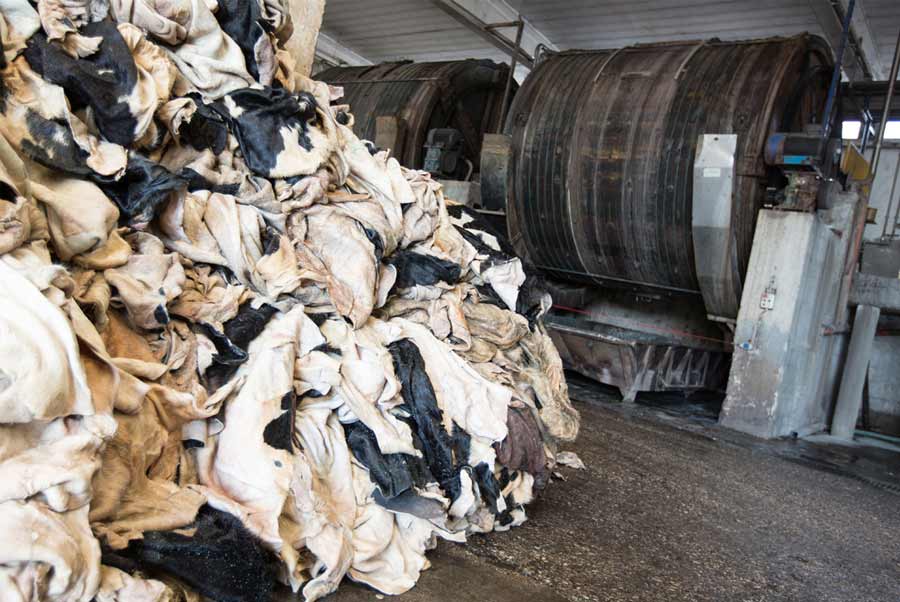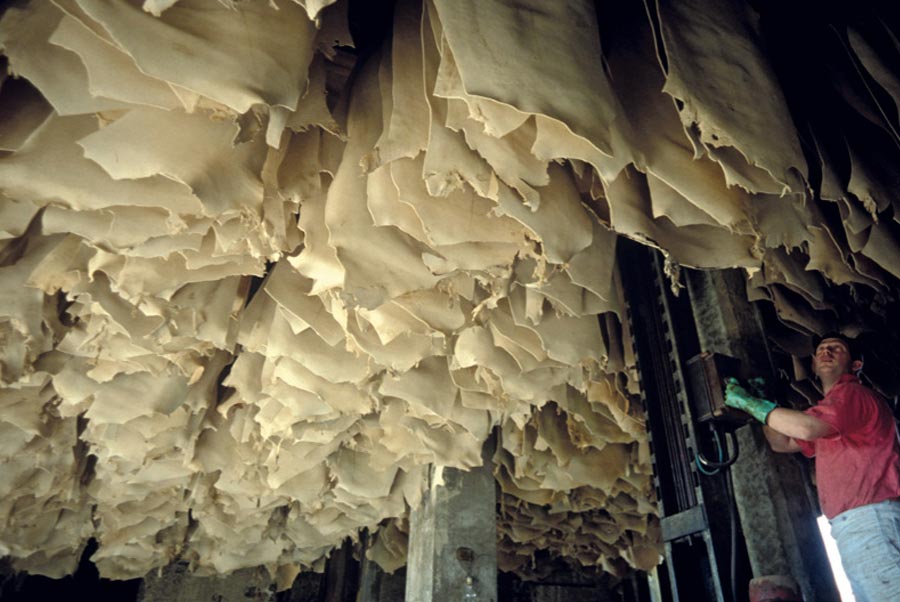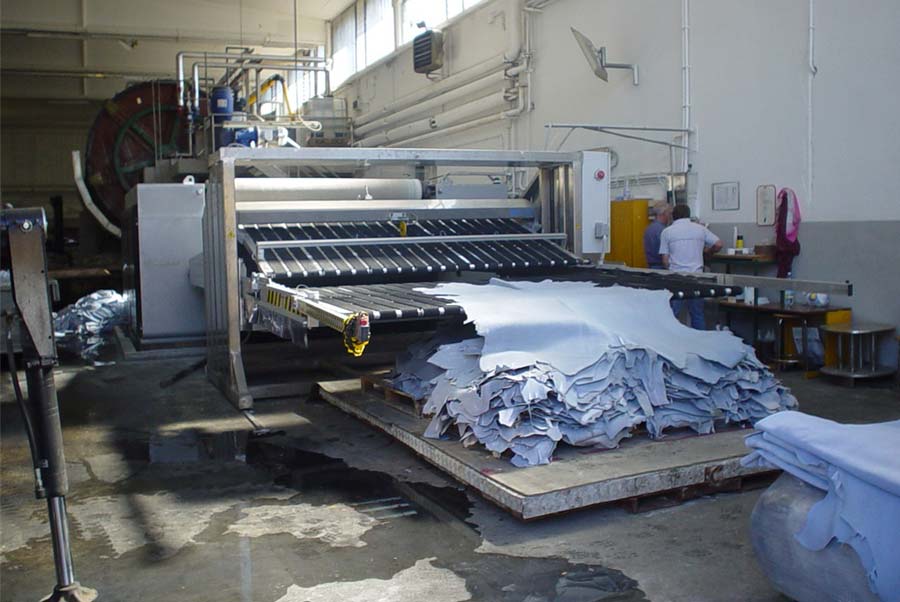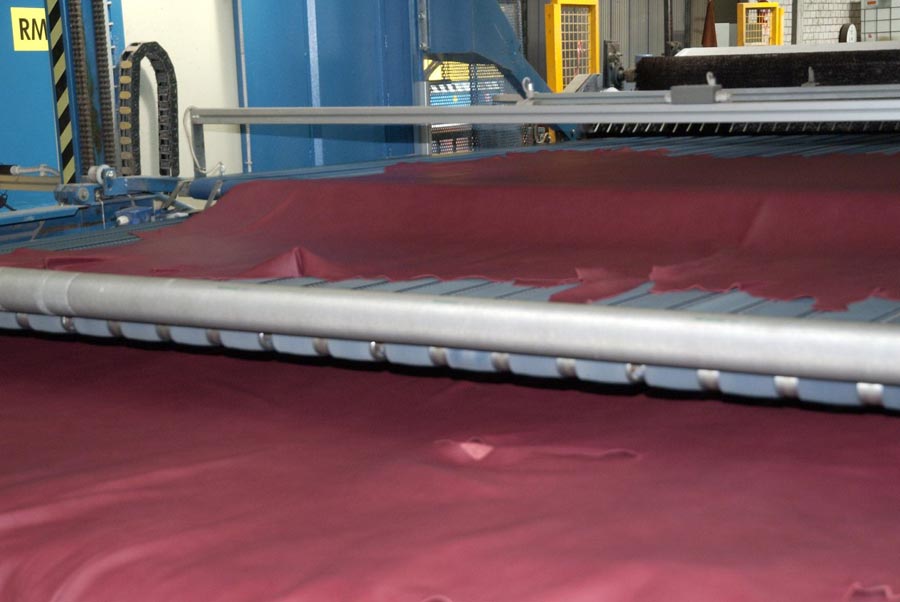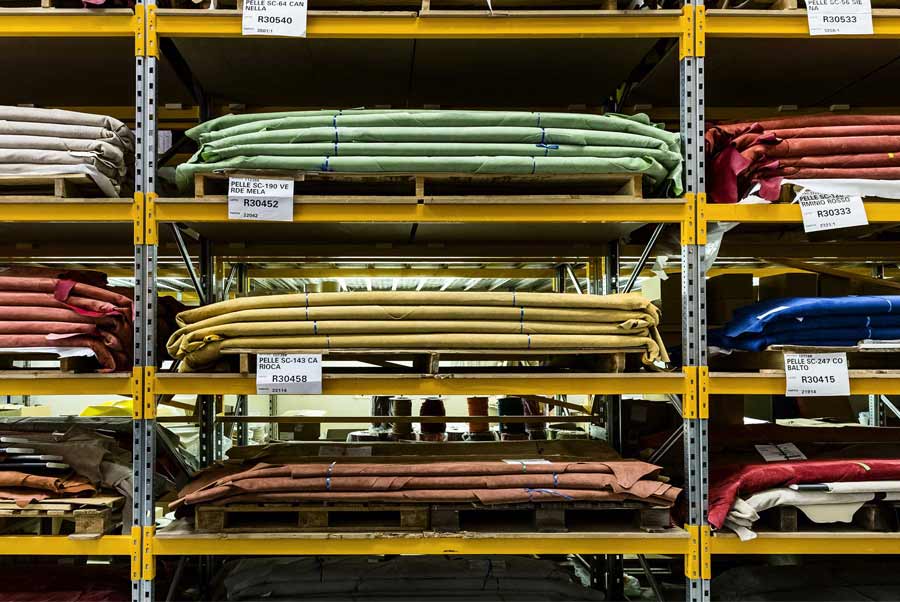Hide tanning process
PRESERVATION
After being pulled off, the raw hide must be protected from bacteria that generate its decomposition. Both sides of the hide are well salted because salt prevents any decomposition. The preservation process causes dehydration.
SOAKING
When raw hides arrive in the tannery, they are loaded in drums with water to remove the salt used for preservation, any blood or dung rests and any micro-organisms. The hide is now rehydrated and clean and must now pass to hair removal process called “liming”.
LIMING PROCESS
At this stage the hair and the epidermis are removed chemically by using a solution of lime (calcium hydroxide) and sodium sulphide.
FLESHING
The flesh side of the hide is cleaned from the grease and the flesh left after flaying.
SPLITTING
Thanks to this mechanical operation, the hide is divided in different sections: the grain – the upper side of the hide – is divided from the split, the lower part of the hide.
MINERAL TANNING
This process aims at giving a strong stabilisation to the hide, it is usually performed with basic trivalent chrome sulphate, a mineral salt that penetrates the hide, and it lasts about 24 hours. At the end of this stage, the hide looks blue/dark green (most commonly used tanning).
PRESSING
This operation is performed to remove all exceeding water and smooth the hide.
SHAVING
With this operation the hide is shaved and gets a uniform thickness all over its surface.
DRESSING AND DYEING
Hides are dyed in drums with water and dyes, anti-mould agents and re-tanning products, fat substances able to achieve the required color and softness.
DRYING
the hide is dried in a vacuum system consisting of steel plates that suck out water through vacuum depression, otherwise it is dried in the air: it is hung onto a chain to get conditioned at room temperature.
STACKERING
The hide is smoothed and softened by means of a machine operating a mechanical beating.
DRY MILLING
The hide is further softened by mechanical shaking in drums.
BUFFING
The hide surface is slightly rubbed with emery paper to remove small imperfections.
FINISHING
The hide is given the desired final color and touch.
IRONING
This operation is performed to give the hide the brightness required.
TRIMMING
This operation is performed to give the final product uniform and precise edging.
FINAL SELECTION
The hides are carefully inspected and selected according to their quality and surface appearance.
MEASURING
The hides are measured with electronic machines. Since leather is an elastic material, it is subject to a natural loss and therefore a measuring tolerance of 2 to 3% is accepted according to the international rules.
LABORATORY TEST
At the end of the manufacturing process, the hides are tested according to international rules. The most common tests are the following:
• Rubbing resistance, Veslic type, dry and wet rubbing (reference rule UNI EN ISO 11640)
• Flexing endurance (reference rule ISO 5402)
• Tear resistance (reference rule EN ISO 3377-1)
• Burst resistance (reference rule UNI ISO 3379)
• Finishing adhesion (reference rule UNI EN ISO 11644)
• Light fastness Xenotest (reference rule UNI EN ISO 105 B02)
• Determination of PH (reference rule UNI EN ISO 4045)
• Sweat alkaline solution resistance (reference rule ISO 11641 Ph 8)
• Ageing by heat (reference rule DIN 54004)

